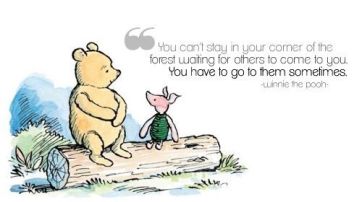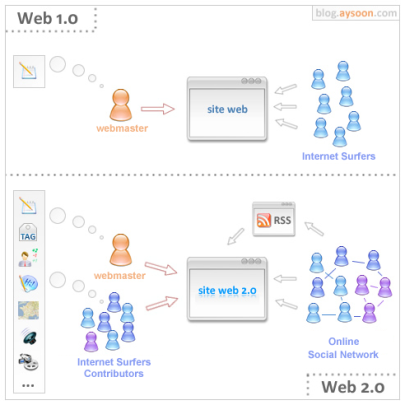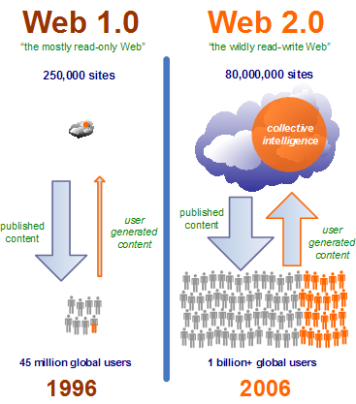
Kocaer, M. (2016). Retrieved from https://www.pinterest.com/pin/289074869801956615/
It has become clear in recent years, post the emergence of Web 2.0, that social networks, are here to stay. As evidenced in the images below, Web 2.0 altered the static nature of the websites we experienced in Web 1.0, allowing users to not only consume but produce content when interacting with a site.

Martin, P. (2007). web 1.0 vs web 2.0. CC BY-NC-SA 2.0

Pan, A . (2006). Web 1.0 vs Web 2.0. CC BY-NC-ND 2.
When users became able to interact with the sites they were visiting online, it was easy to see how the popularity of social networking sites grew rapidly, as the ability of users to draw on the collective intelligence of other users and ‘friends’ replicated networking in the physical sense but evolved to ‘networking on steroids’, as users were suddenly able to connect with people at any time in any place with the click of a button (O’ Reilly, 2005). Christopher Barnatt (2008, March 30) elaborates on this in the video below and suggests that Web 2.0 involves making connections between two or more people, items or applications, essentially allowing interpersonal computing aspects to integrate their offerings and provide a richer service than that of Web 1.0 sites.
This emergence of Web 2.0 and social networking challenged us to re-think our behaviour on the internet and, instead of viewing it as simply a place to gather information, users were able to go beyond this and create and discuss information with others around the world (De Rosea, Cantrell, Havens, Hawk & Jenkins, 2007, p. vii). As Meyer suggests when quoting from A. A. Milne, the concept of social networking that evolved with Web 2.0 has allowed us to connect with others where they are comfortable, instead of waiting for them to come to us, creating attractive networking possibilities as we strive to create and maintain relationships both personally and professionally (as cited in Ishizuka, K, 2010, p.32).
The social networking craze that resulted from Web 2.0 is one that needs further exploration in the world of education. If individuals have become so attracted to broadening their networks beyond physical forms and connecting with others in the digital world, it won’t be long before this concept is one we must consider in our classrooms. We must consider how the emergence of Web 2.0 and social networking will push us from the world of static learning and information to the interactive.
Reference List
De Rosa, C., Cantrell, J., Havens, A., Hawk, J. & Jenkins, L. (2007). Sharing privacy and trust in our networked world: A report to the OCLC membership. Dublin, Ohio: OCLC [ebook]. Available from www.oclc.org/reports/pdfs/sharing.pdf
Ishizuka, K. (2010). People who need people. School Library Journal, 56(2), 32.
O’Reilly, T. (2005) What is Web 2.0. Retrieved from http://www.oreilly.com/pub/a/web2/archive/what-is-web-20.html?page=2